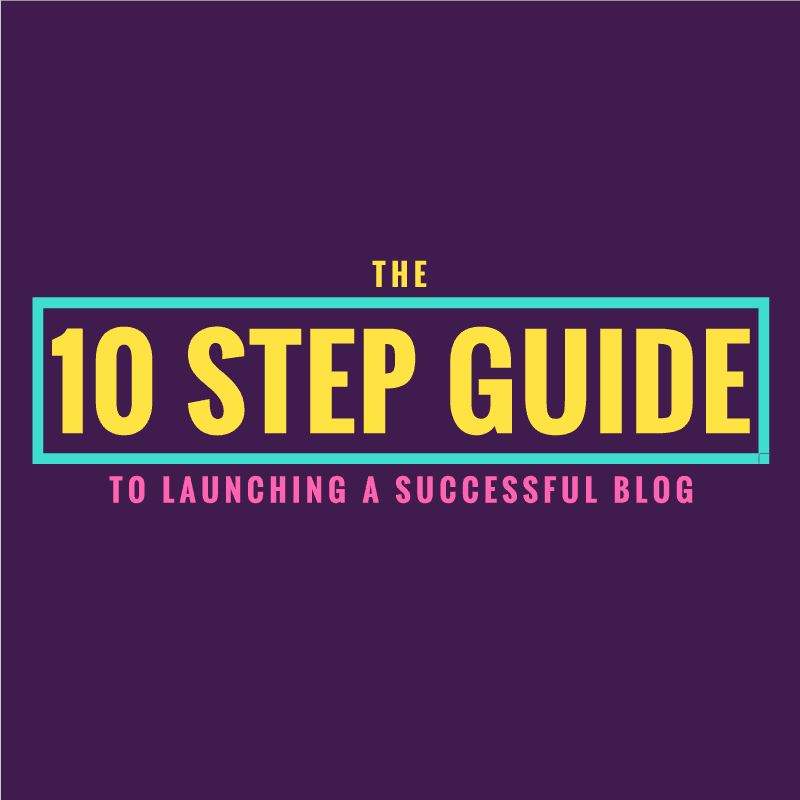Many small businesses have yet to start a blog.
The reasons vary, but the results are the same.
Businesses that don’t blog get significantly fewer leads than those that do.
What recently occurred to me, however, is that there are likely small business owners that don’t know how to start a blog.
Without a clue as to what to do, it’s tough to be successful.
It’s tough to do anything when you don’t know-how, and the lack of confidence stops you from trying.
To correct that, you just need to learn.
Once you know how to start a blog, you can get all the benefits that having a small business blog offers.
You can start earning those additional leads, adding revenue, and growing faster.
This step-by-step guide will teach you what to do to start a blog.
Contents
Get A Place To Start A Blog
It should be obvious that you can’t start a blog without a place to put it.
Blogs are a web-based content format and, therefore, need a web-based platform to exist on.
Without one of your own, you’ll have no way to start a blog.
You can’t just upload Word documents to your website and expect them to get found.
You need a platform that allows your blog content to become a page on your website - supposing you even have a website - if you intend to start a blog. Without a place to put your blog nobody will find it. Share on XBearing that in mind, it’s time to take a look at the options you have to start your blog.
And, believe it or not, there are excellent options right at your fingertips.
Sometimes you don’t even need to do anything to get to them.
Before we get to the steps to start a blog, let’s handle the steps to secure a platform for your blog.
Do You Have A Website To Start A Blog On?
The best place to put your blog is on your website.
Therefore, the first question you should ask yourself is whether you have a website.
If you don’t have one, you’ll need one.
Of course, if you don’t have a website, there are a host of other problems you can solve by getting one.
Once you have one – especially if you already do – you’ll need to make sure it’s got blogging software.
You need a way to add blog articles to your site that’s within your technical capability.
Before content management systems (CMSs) were a thing, we used to upload a new page to our website manually.
That required an understanding of code and file transfer software.
But now there are platforms like WordPress that make adding blog articles much easier.
Without a CMS, your job will be tough.
I recommend getting a good CMS to make your life easy.
Select Your Blogging Software
Unless you’re planning on doing things the old-fashioned way, it’s time to look at a CMS.
A content management system is a great tool when you want to start a blog.
Most were intended to run blogs, but they have expanded with the ability to build entire websites.
When you’ve already got a website, there’s a good chance it was built on a CMS.
If that’s the case, you’re already taken care of and you’ll just need to know how to use it.
They’re usually simple to use and it shouldn’t take much to learn.
A content management system is a software that’s based on the intention of making a website easy to update and manage without any technical skills. It makes blogging accessible for nearly everyone. Share on XBut when you don’t have a website or it’s not built on a CMS, you have a choice to make.
With options abundantly available, selecting the right CMS to start a blog on can feel overwhelming.
However, it’s easiest if you stick with the major options.
WordPress, Drupal, and Joomla are the three most common CMS platforms.
I recommend WordPress.
It’s the most popular of the three, making tutorials, help, and additional software the easiest to get.
Plus it’s easy to use and there are thousands of options to help you make it look good.
Be Sure Your Blog Is Designed With The Reader In Mind
If you want to start a blog that gets people coming to it, you need to put some focus on the design.
People who visit your blog aren’t there to hunt down everything they want to learn about.
They need it presented to them in a straightforward way that’s easy to read and enjoy.
Also, this CMS should contain all the content on your entire website.
It must be branded and have direction.
Those requirements are unavoidable if you intend to convert your site visitors into a regular audience, leads, and clients.
You need to make sure you have your CMS design optimized for user experience and branded to your company.
Assuring that your readers can navigate your site, find the information they want, and recognize the brand providing it helps to build your odds of success.
The Steps To Start A Blog
Now that you have a place to start your blog, it’s time to look at what it takes to get your blog going.
You might think you can just get to writing anything that comes to mind, but that’s not true.
Without the proper preparation, your blog won’t do you any good.
Blogs are more valuable to your small business than just a place to write ideas or sales pitches down.
Blogs have amazing value for your business when you take the time to plan them out correctly and execute on the plan you’ve built. Without preparation, there’s no predictable outcome from a blog. That’s a waste of your time. Share on XThey’re a great way to build your search rank, draw in site traffic, build trust with your audience, and earn sales.
But only if you know what you’re doing.
So, to start a blog, begin with a little bit of planning.
Honestly, about half of starting a blog is planning and preparation.
Doing the work, however, leads to predictable outcomes and success with your blog.
Decide The Goal Before Your Start Your Blog
Before you do anything to start your blog, you need to know why you’re starting one.
What’s the endgame you’re trying to achieve here?
There are many options, and not all of them directly result in sales.
And it’s fine if they don’t.
Blogs are part of a long-term content strategy.
They’re not designed to deliver fast sales, but instead, bring you better quality clients.
But you have to know the role they fill in your strategy.
Are they there to help build brand awareness, or do you want them to nurture leads towards a purchase?
Yes, your blog can do both at the same time, and so much more.
Once you decide what result you want to achieve with your blog you can make better decisions about it.
Set Metrics To Measure Your Success
Once you know the goals you’re trying to hit, you have to know how to measure them.
What metrics best represent what you want to do with your blog?
If you’re looking to spread brand awareness, you might look for the number of unique visitors and social reach.
For a goal of engagement, you might look at the number of comments and feedback on the blog.
And, of course, if you’re looking for new leads, focus on the number of per-page conversions.
The key to knowing if you’re hitting your goals is to know how to measure your goals. Marketing can have many target outcomes and even more ways to measure them. You have to choose the way that works best for you. Share on XWithout a solid way to measure your goals, you’ll never know why something worked or didn’t work.
You likely won’t even know if it worked.
That’s not a great way to create improvement or repeat results.
Be sure you understand how to measure your success and make sure you’re collecting as much data as you can at the same time.
Determine Your Target Audience
How can you possibly start a blog if you don’t know who it’s for?
Your target audience should dictate everything you choose to do with your blog.
From your topics to your tone, everything you add to your blog has to resonate with the people you’re trying to connect to.
If it doesn’t, you need to find out why and make adjustments.
However, if you don’t know who you’re trying to reach, you’re going to have a hard time doing that.
Many small business owners want to reach too wide a target for success.
Wide nets work well for big brands, but small companies need to focus on an underserved market they can do something for.
Once you’ve chosen your target, research to find out everything about them that influences their decision about your products and services.
You’ll use those deciding factors to help guide the content you create for your blog.
If you want to start a blog right, you need to know who your audience is.
Outline The Feel Of Your Blog
With your audience selected, you need to talk to them in a way they’ll feel.
Before you start a blog, you’ve got to decide how it’s going to come across.
Think of your blog the same way I’ve suggested you think of your brand.
Treat your blog like a member of your audience.
Any time you work with anything that represents your brand, you need to make sure it’s not only a great representation of you and your values but that it also fits in with your target audience and feels natural to them. Share on XThe look, feel, and manner of speaking you use to produce your blog articles should fit in with your target audience.
They need to feel at home reading your content.
Your blog also needs to reflect your brand.
If you’ve done the work to build an effective brand, these two things should be the same.
Either way, you need to make sure your blog is something that your audience feels natural to be a part of.
Achieve that and you’ll capture their interest with ease.
Create A List Of Potential Article Topics
To start a blog, you need to know where to start.
What is it you want to write about?
There’s an overwhelming pull for most small business owners to write constant sales material.
It’s a habit for us to constantly ask people to buy our product.
But a successful blog can’t do that.
You need to make sure your blog covers topics that benefit your target audience.
They visit your blog to learn how to solve a problem or make improvements in their lives.
Build a list of potential topics that it makes sense for your business to cover.
The area where things that interest your audience meet things your business has expertise in are the topics you need.
Write those topics down after thorough research.
This is your starting point.
From here you’ll build all the blog content you’ll ever need.
Do Keyword Research Around Your Topics
Now that you have a list of topics, you’ll need to know what people will use to find them.
Keyword research is incredibly important to do as you start a blog.
This lets you know all the ways people search for the information you plan to provide them.
Jump into the Google Keyword Planner or the Moz.com Keyword Research Tool to find keywords relevant to the topics you’re covering.
Using these keywords, you’ll plan out the individual blog articles you intend to write.
You need to create content around the keywords and key phrases that people search for if you want them to find your content and your website. Share on XThose articles will be optimized for the keyword they cover so they’ll get found in search.
Producing articles around keywords is the foundation for SEO on your website.
These articles help build your site’s authority and help people find you for your services.
Because, unless you offer a rare service, using your services as keywords will likely bury you among other SERP competition.
Instead, you’ll use these less competitive key phrases to rank in search, building your overall site authority.
It’s the best way to make sure your content leads to traffic on your site.
Start Your Blog By Researching Your Article Topics
With your topics selected and listed, it’s time to research what you’re going to say.
No matter how big an expert you are in your industry your audience won’t know until you start a blog.
So, when you first start, you’ll need to prove your expertise with research.
Every time you make a statement that you can prove, it’s best to link evidence to it.
This shows your audience that you’re not alone in what you say.
They can follow your research and verify what you’re telling them.
It helps to build their confidence in your brand and the information you produce.
And it adds to your website’s authority score, helping boost your SEO at the same time.
Write Your First Article
Now that all the research to start your blog is done, it’s time to put it to use.
Yes, we’ve reached the phase where you get to write your first article.
With all the research you’ve done, compile the information in a format that’s interesting to read.
Keep your sentences and paragraphs short.
Break up large walls of text with visual elements like images or quotations.
Link to all the sources it makes sense to mention.
A great blog article – especially one that draws people in – has an interesting title.
It’s also usually around 2000 or more words long.
Remember, you’re looking to educate your audience, but you’re also trying to connect with them.
There’s no point in writing a blog article that doesn’t do the whole job. It should answer the question completely, relate to your audience, and help you rank in search. It’s your job to balance those. Share on XDistill the information you share into a format that fits the feel we discussed.
Write in a conversational tone that feels more like a chat than a lecture.
Stay light and don’t try to sound too smart.
By keeping it simple and friendly you’ll reach your audience better.
However, don’t publish yet.
We’re still not ready.
Optimize For Your Keywords
Look back at the article you just wrote.
Are you following SEO best practices with it?
Chances are you’re not, and that’s ok.
If you’ve focused too much on SEO at this point your article won’t sound natural.
Too many keywords and key phrases make the content sound awkward.
Producing awkward content is no way to start a blog and see success.
It’s perfectly acceptable to focus on writing a piece of great content before going back to optimize it.
That’s the preferred way to do things.
Before you dig into SEO, remember that you should never sacrifice the quality of your content.
Bad content won’t earn you any leads, even with excellent SERP rankings.
And it will drive away your audience.
SEO doesn’t matter if you do that.
Just a few more steps and you’ll be ready to publish.
Produce Several More Articles
Now that you understand what it takes to produce an article, you should be able to do it more efficiently.
Before you publish your first article, you’ll want to have a few more on deck.
Blogs are creative endeavors, and sometimes we get stuck with creativity.
By producing more than one article at the beginning you help assure that you’ve got plenty of time to create.
Smart bloggers have articles on tap that they can release whenever they’re stuck to stay on schedule. These evergreen articles help to make sure you never miss a publishing deadline and can remain consistent for your audience. Share on XA great blog launch should have 5-15 blog articles ready to publish.
The more you have, the more padding you give yourself to continue producing quality content.
Ideally, you’ll want a month’s worth in store.
Considering the most effective blogs produce content four or more times a week, that can be as many as 20 articles at the ready.
But even if you’re just producing weekly, having plenty available helps take the pressure off.
It helps to avoid the kind of inconsistency that kills your audience base.
Why start a blog if you’re not going to get the benefits?
Publish On A Regular Schedule
Before you hit that publish button, decide how often you’re going to produce a new article.
Once you start a blog, you’ve got to remain consistent if you want to reap the benefits.
People prefer predictability, and consistency gives them that.
Deciding on a schedule helps to offer that without any surprises to you.
It helps you understand the pace you’ll need to create blogs at and the resources it will take to do so.
A great blog article takes an average of about three to six hours to produce, after all.
Knowing ahead of time when your article should be ready allows you to plan your time effectively.
Plus, a routine helps build your visibility since people know when to find your newest content.
Promote Your First Article
Ok, it’s time to hit publish.
Now, what happens?
Well, since this is your first article, you’re not likely to get much search traffic.
That’s what happens to everyone when they first start a blog.
Instead, you’ll need to do a lot of shameless promotion.
Social media is a great place to make this happen.
Through your business pages on different social networks, share the content you’ve just produced.
Be sure to give it relevance in the post so people aren’t confused by a link with no context.
While you’re at it, you probably ought to visit sites like Alignable, Quora, Reddit, and the host of industry-related blogs out there.
Respond to people’s questions and build value for them.
Whenever it’s relevant, drop the link to your blog article in those comments and answers for additional information.
Before you know it you’ll start seeing traffic come in and your SERP rank improves.
The Steps To Start A Blog Are Basic
Like any other form of marketing, blogging is primarily a matter of understanding what you’re doing.
Now that you know how to start a blog it’s time to start reaping the benefits for your brand.
Put these steps to work and start seeing the results.





